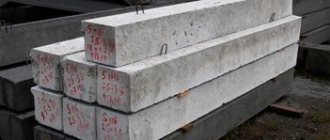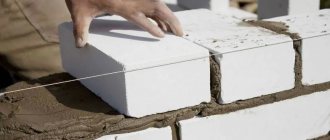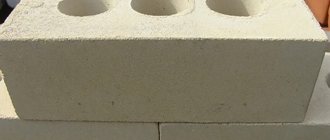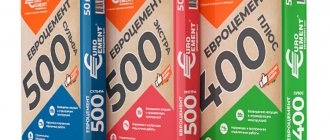Would you take seriously a building material whose appearance resembles the bricks of a well-known designer? Many of you will probably answer no. However, in fact, we are talking about a fairly effective material that can be used for the construction of critical structures that must withstand heavy loads. Today we will tell you in more detail about the brands and parameters of these building elements.
What is a Lego brick?
Like the parts of a familiar construction set that have protruding parts and recesses, this building material works on the same principle. In fact, using it, we assemble the same construction set, only we build from it not toy houses, but real houses. At the same time, the technical characteristics of the material allow it to withstand heavy loads, which makes it possible to create both internal and load-bearing walls from it. This material is also widely used in finishing and decoration.
Is it possible to make it yourself?
Before you start making Lego bricks with your own hands, you should carefully calculate the economics of the project. If construction work requires a small amount of material, it is better to purchase it from reliable suppliers. It is possible to purchase special equipment and allocate a site for storing components and finished material only in case of stable and constant demand.
To obtain a quality product you will need the following materials:
- sand at the rate of 1:10;
- screening at the rate of 1:70;
- Portland cement M500 at the rate of 1:20.
About 285 finished products are obtained from one ton of raw materials. The cost of materials, electricity, the level of transportation costs and workers' wages depend on the location of the mini-factory equipment, and can vary significantly from city to city.
For the production of Lego products, you can select any equipment - from small hand-held machines that can produce up to 800 pieces per working day, to powerful mini-factories with high productivity of 10,000 products. The cost of molding presses varies from 45,000 rubles to several million.
Advantages of building material
- Strength allows Lego bricks to be successfully used in the construction of multi-story buildings;
- Water absorption is only 5-6 percent, which makes this material suitable for use in regions with a humid climate;
- Due to the low level of water absorption, the latter does not accumulate in the structure of the brick and does not destroy it when the temperature drops and ice forms. The material can withstand two hundred freeze-thaw cycles;
- The machines for the production of these building materials are very compact, therefore, as in the case of foam concrete, this type of brick can be produced directly at the work site;
- The weight of the material is very insignificant, so its use does not require a buried massive foundation;
- The cavities inside the material allow for simple wiring;
- The brick has an attractive appearance and a large number of colors. After installation, a wall made from it can be used without further finishing;
- The laying speed of this building block is several times higher than that of ordinary bricks;
- Since these building materials fit together very tightly, the glue consumption is extremely small (Manufacturers say that it will take less than a quarter of a hundredweight of adhesive mass to process 500 bricks);
- Quite a cheap building material.
Important! In numerous videos, the process of laying this brick is shown very simply and it is repeatedly stated that to successfully build walls in this way, you do not need the knowledge of masons and, in general, anyone can do this. However, many authors of such videos pursue their own commercial interests, exploiting the theme of ease of installation. In fact, it is advisable to study the instructions in advance and practice masonry.
How is it made?
Lego bricks are made from cement and limestone. Various industrial wastes are also added to the composition: dolomites, shell rocks, travertines and more. In the process of making blocks, firing is not used. Thanks to this, the cost of such building materials is quite affordable. 500 bricks require about 220 kg of cement and 1.6 tons of screenings.
The blocks are produced by pressing. Thanks to strong pressing and drying, they become ultra-strong and without firing. The number of protruding pins and grooves for them may vary. “Locks” on blocks can be vertical or vertical-horizontal.
Flaws
In general, according to the technical characteristics of this material that are already known today, it has almost no shortcomings. The only downside is the fact that the material is still new, which means there is simply no experience working with it, as well as long-term operation of the latter, at the moment. At the same time, an important disadvantage may also be the fact that such bricks are not produced by large manufacturers. Consequently, there is no streamlined production or certificates guaranteeing quality yet. And the buyer can with equal probability either purchase a truly high-quality product or spend money on something that will disappoint him later.
It should also be noted that this technology was initially used in South America - a part of the world that is radically different from our country in its climate. Consequently, in the future there is a non-zero probability that problems may appear in this construction method that will greatly reduce its popularity among our compatriots.
Advantages
The positive properties of the material are not its only advantage. The unique shape ensures ease of laying walls or partitions and high-quality connection of elements. The most important advantages of using a new type of brick include:
- Possibility of simple installation of communications inside voids.
- Low cost of products.
- Wide range of colors (from light gray to rich red, dark blue, pink or yellow).
- There is no need for subsequent finishing of walls and structures made of Lego bricks (it has a smooth surface or has edges with a slight texture).
- The low weight of the bricks does not require the preparation of a buried foundation (for buildings of 1-3 floors).
The material is also attractive due to its versatility of use. Suitable for both finishing buildings and laying out decorative indentations and stoves. Can be used for the construction of gazebos and fences.
Features of working with Lego bricks
- When laying these blocks, the space is filled not with a cement-sand mixture, but with a special adhesive composition. This is another advantage, since there is a minimum distance between the blocks, and the cold bridge is not so pronounced;
- This material is often used to construct fence posts. In this case, as the manufacturers assure, you don’t even need glue. All that is enough for this is to lay out 5-6 rows, and pour concrete into the space formed in the center, having previously inserted strong reinforcement there. The process is somewhat reminiscent of creating a stone fence, but without formwork and much faster;
- Holes in this material can either be used for reinforcement or simply reduce thermal conductivity due to the presence of air pockets. Therefore, with the same masonry thickness, a wall made of light bricks will be warmer;
- This type of brick can also be used as permanent formwork in monolithic construction. To do this, it is necessary to lay two layers of masonry at a distance from each other. Metal reinforcement is placed at this distance, after which the concrete mixture is poured. As a result, we get a wall with high strength and visual characteristics. After all, it does not require additional finishing, since the brick itself looks very beautiful;
- It is best to apply the adhesive solution to the surface of the brick using a special gun.
Where is it used?
Lego bricks today are often used for the construction of oversized structures, such as garages. It is often used for facing work. But Lego blocks may have a wider scope of application. They are suitable for construction:
- private houses;
- gazebos;
- barbecues and fireplaces;
- load-bearing walls;
- supporting pillars and columns;
- permanent formwork;
- fences;
- MAF;
- walls, the height of which can reach 4 meters.
Construction using this material is very profitable financially. And the first point of saving is the foundation. When using Lego blocks, a solid foundation is not required. After all, the difference between Lego blocks and ordinary bricks is their light weight. In addition, there is no need to clad the constructed walls, since the outer part of the building will be smooth and visually attractive.
Types and sizes
The most common modification of Lego bricks are rectangular blocks with two through cylindrical holes.
Depending on the diameter of the voids, there are perforated (the area of the holes is more than 25% of the brick area) and solid (the area of the holes is less than 25%) blocks. In addition, building materials are classified according to some other criteria.
By type of fixation
- Both longitudinal and transverse displacement of blocks is excluded.
- Longitudinal displacement of the block is possible.
By invoice
- The front surface imitates natural materials (stone, wood, plastic, etc.).
- The front surface has no texture.
By lock type
- Tongue and tongue blocks (T&G).
- With tongue and groove fixation (P&D)
- With topological spatial lock.
Cons of silicate
Among the disadvantages of sand-lime brick are the following:
- is a heavy material for construction (30% heavier than ceramics and natural limestone). Therefore, as a rule, masonry is built on a solid foundation. Laying silicate is more difficult, therefore, the prices for such work are higher;
- does not tolerate constant exposure to water (it is unacceptable for basement rooms, it absorbs water and contributes to increased humidity in the premises);
- at high temperatures, cracks form (such bricks cannot be used in chimneys, fireboxes, or in the construction of fireplaces and stoves);
- there are no smooth shapes and decorative elements (made only in the form of a rectangle);
- has good thermal conductivity (to avoid heat loss in the room, it is necessary to increase the thickness of the wall or insulate the room in another way);
- complete or partial destruction is possible when heated to high temperatures and the passage of steam;
- is capable of absorbing water (up to 8%), therefore it is unsuitable for the construction of structures in conditions of high humidity.
What is the difference between hollow sand-lime brick and hollow ceramic brick?
An important difference is that voids in ceramics can take different shapes and be located anywhere throughout the product, which does not at all help to increase the strength of this building material. Hollow silicate has regular cylindrical voids in the central part. This feature significantly increases the strength of the product. Produced in individual molds rather than using special extrusion presses, silicate can even be produced to specific dimensions specified by the customer. After all, individual shapes require certain sizes, and ceramic presses are difficult to set up, so ceramic bricks are produced only in standard sizes.
Equipment
The construction equipment market offers a wide selection of equipment for making Lego bricks. Here you will find both large lines and mini installations for organizing a workshop in a small room.
The price of equipment for the production of Lego bricks depends on the power, output and pressure that is exerted on the raw materials when forming the block.
From the equipment you will need a crusher, a vibrating sieve, a mixer, a hopper, a dispenser, a hyperpress, a mold for the production of Lego bricks and a steaming chamber.
Composition and characteristics
The working mixture for making Lego bricks includes the following elements:
- purified sand;
- clay;
- mineral screening of fine fractions;
- Portland cement grade 400;
- dyes and plasticizers.
The mass fraction of Portland cement ranges from 8 to 15%, the remaining volume (from 80 to 90%) is occupied by a sand-clay mixture, mineral components and plasticizers.
The table shows the main performance characteristics of monolithic ceramic bricks and Lego:
| Options | Units | Monolithic ceramic brick | Lego brick |
| Specific gravity | kg/m3 | 1600 — 1900 | 1550 |
| Strength grade* | M150 | M150 | |
| Number of freeze/thaw cycles | 35 — 40 | 35 — 40 | |
| Weight of one brick | kg | 3,4 — 4 | 3 – 3,5 |
| Moisture absorption | % | 6 — 14 | 5 — 6 |
| Coef. thermal conductivity | W/m*K | 0,5 – 0,8 | 0,4 – 0,55 |
| Note: strength characteristics are taken based on the possibility of using the material for capital construction. |










